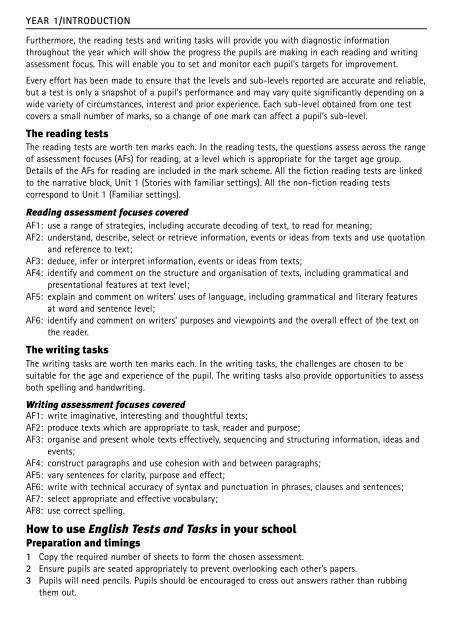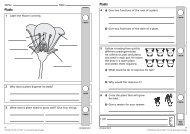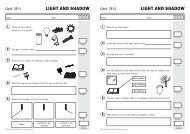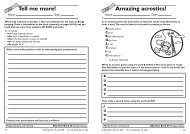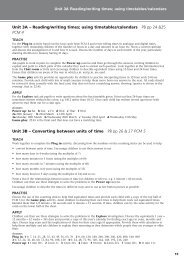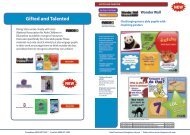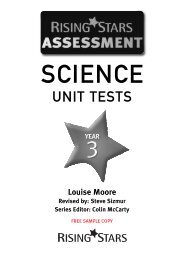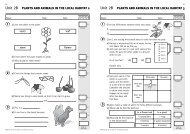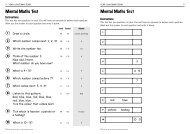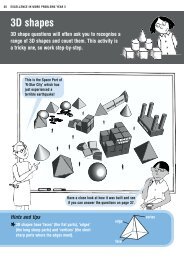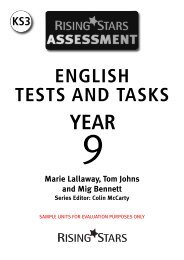1 - Rising Stars
1 - Rising Stars
1 - Rising Stars
- No tags were found...
Create successful ePaper yourself
Turn your PDF publications into a flip-book with our unique Google optimized e-Paper software.
YEAR 1/INTRODUCTIONFurthermore, the reading tests and writing tasks will provide you with diagnostic informationthroughout the year which will show the progress the pupils are making in each reading and writingassessment focus. This will enable you to set and monitor each pupil’s targets for improvement.Every effort has been made to ensure that the levels and sub-levels reported are accurate and reliable,but a test is only a snapshot of a pupil’s performance and may vary quite significantly depending on awide variety of circumstances, interest and prior experience. Each sub-level obtained from one testcovers a small number of marks, so a change of one mark can affect a pupil’s sub-level.The reading testsThe reading tests are worth ten marks each. In the reading tests, the questions assess across the rangeof assessment focuses (AFs) for reading, at a level which is appropriate for the target age group.Details of the AFs for reading are included in the mark scheme. All the fiction reading tests are linkedto the narrative block, Unit 1 (Stories with familiar settings). All the non-fiction reading testscorrespond to Unit 1 (Familiar settings).Reading assessment focuses coveredAF1: use a range of strategies, including accurate decoding of text, to read for meaning;AF2: understand, describe, select or retrieve information, events or ideas from texts and use quotationand reference to text;AF3: deduce, infer or interpret information, events or ideas from texts;AF4: identify and comment on the structure and organisation of texts, including grammatical andpresentational features at text level;AF5: explain and comment on writers’ uses of language, including grammatical and literary featuresat word and sentence level;AF6: identify and comment on writers’ purposes and viewpoints and the overall effect of the text onthe reader.The writing tasksThe writing tasks are worth ten marks each. In the writing tasks, the challenges are chosen to besuitable for the age and experience of the pupil. The writing tasks also provide opportunities to assessboth spelling and handwriting.Writing assessment focuses coveredAF1: write imaginative, interesting and thoughtful texts;AF2: produce texts which are appropriate to task, reader and purpose;AF3: organise and present whole texts effectively, sequencing and structuring information, ideas andevents;AF4: construct paragraphs and use cohesion with and between paragraphs;AF5: vary sentences for clarity, purpose and effect;AF6: write with technical accuracy of syntax and punctuation in phrases, clauses and sentences;AF7: select appropriate and effective vocabulary;AF8: use correct spelling.How to use English Tests and Tasks in your schoolPreparation and timings1 Copy the required number of sheets to form the chosen assessment.2 Ensure pupils are seated appropriately to prevent overlooking each other’s papers.3 Pupils will need pencils. Pupils should be encouraged to cross out answers rather than rubbingthem out.


